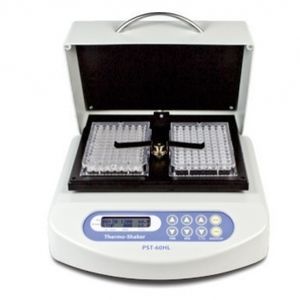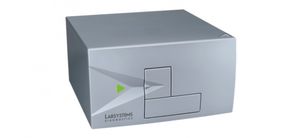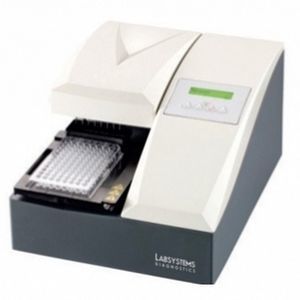
- Laboratory
- Sample management
- Automatic sample preparation system
- Ani Labsystems Ltd. Oy
Automatic sample preparation system NS496 Pluslaboratorybloodbenchtop
Add to favorites
Compare this product
fo_shop_gate_exact_title
Characteristics
- Operation
- automatic
- Applications
- laboratory
- Sample type
- blood
- Configuration
- benchtop
- Preparation format
- microplate
Description
NS496 plus DBS puncher with air humidification system and clean punch mechanism designed to automate laboratory automate system and is used to punch dried blood spot samples into a 96 wellmicrotitre plates for subsequent analysis
The NS496 Plus is designed to automate laboratory sample preparation and is used to punch dried blood spots samples into a 96 wells microtitre plates for subsequent analysis. It offers a four-plate capacity with the disc size of 3.2 mm. The NS496 Plus can also be programmed to punch multiple discs into one or more wells or plates.
The NS496 Plus is a next generation instruments with new features and improvements for ease of use.
Integrated Barcode reader
Enables positive identification and traceability of plates, samples, controls, and standards.
Allows for traceability at all levels of the punching process, delivering unique identification information.
Quick release Punch and Die Set (mark 4)
Allows for quick and easy removal of the punch by laboratory operator, either to change punch size or for cleaning purposes.
Minimizes downtime for laboratories.
Disk Detector System
Recognizes if a disk has not passed into the receiving well and automatically responds.
Beam design for high detection reliability.
Air Humidification System
Ensures the punched disk is delivered to the correct receiving well for downstream processing and reduces the chances of well ‘jumping’.
Dedicated Cleaning receptacle
A dedicated cleaning receptacle is provided to minimize cross-contamination issues.
Catalogs
Automatic NS496 Plus
3 Pages
*Prices are pre-tax. They exclude delivery charges and customs duties and do not include additional charges for installation or activation options. Prices are indicative only and may vary by country, with changes to the cost of raw materials and exchange rates.





